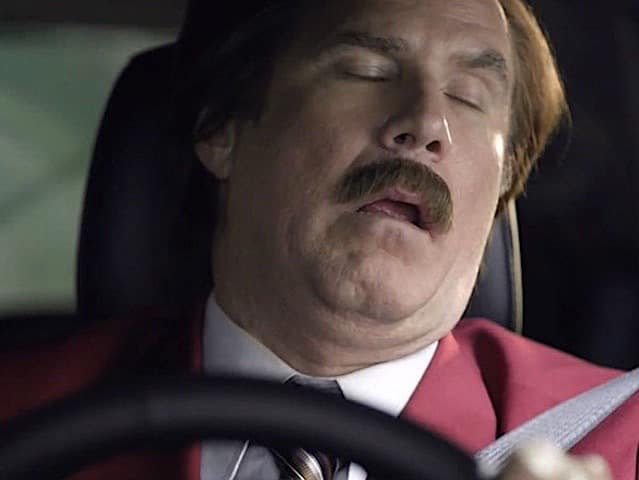We have all either suffered from it or tossed and turned in bed trying to ignore it — that loud, cavernous snore that seems to come from deep within yourself or a loved one. It’s been the brunt of a number of small- and big-screen jokes, but it’s become less and less of a laughing matter. Snoring can be the sign of a greater problem: sleep apnea.
According to the National Institutes of Health, more than 12 million American adults have sleep apnea, and approximately 50 percent of all men suffer in some way from the disorder. The most common of the three types is obstructive, usually a result of obesity. It is caused by an individual’s airway becoming blocked during sleep when the soft tissue in the rear of the throat collapses. This blockage leads to brief pauses in breathing and can occur hundreds of times a night.
People suffering from sleep apnea do not get the restful sleep necessary to prepare for the next day, and this can lead to some dangerous situations for school bus drivers.
“As soon as you’re not being stimulated in an intense way, you can fall asleep,” said Dr. David Rapoport, an associate professor of medicine and director of the Sleep Medicine Program at New York University’s School of Medicine. “Even if you’re not actively falling asleep, you may have these very tiny, little micro-sleeps; so that while your eyes are open, there’s 10 or 15 seconds when your brain is actually asleep. And if something were to happen, you don’t react to it.”
A lot can happen in 10 to 15 seconds when you’re behind the wheel of a school bus. Imagine driving along a route and a student steps off the curb. Normally, the driver would immediately brake. But during a micro-sleep, the driver may not see the child, and the worst case scenario could become a reality.
“It’s a huge, huge problem for the transportation industry, including school bus drivers,” added Rapoport.
Lonnie Whitten, director of transportation for Village Christian Schools in Sun Valley, Calif., knows something about micro-sleeps. Several years ago, she received complaints from students about a bus driver who appeared to fall asleep while at stop lights but always seemed alert just as the signal changed. A few weeks later, following a field trip, some parents voiced their own concerns about the same driver.
“He insisted that he was not falling asleep and was alert at all times,” recalled Whitten, who did not know what to make of the initial student complaints because the stories were inconsistent. “When the adults came in, it made more sense. [They said] he was running over the dots in the road and swaying slightly while driving.”
Whitten put her driver on leave pending a sleep study, which revealed an extreme case of sleep apnea. He was prescribed a continuous positive airway pressure (CPap) machine, a device that blows air at a measured pressure to help alleviate the blocked airway. But it is only used in moderate to severe cases of sleep apnea. For a less severe cases, the answer is much simpler to recommend but not always easier to implement.
“One of the easiest things to do is lose weight in the sense that it’s the most physiologic,” said Rapoport, who is also a board member of the American Sleep Apnea Association. “It can be difficult to lose weight, and it’s not always predictable how much you have to lose.”
Sometimes it’s only a few pounds or, depending on how overweight someone is, it could be closer to 20 or 30 pounds before improvements occur. Whether needing a CPap machine at night or a better diet, drivers are encouraged to not wait until something unfortunate happens.
“I decided to get help after I had a minor accident in a motorcoach,” said Wayne Hendrix, Hamilton County Schools’ director of transportation. “I went to sleep sitting at a red light after getting a full nights sleep in a hotel that morning and rolled into the bumper of the car in front of me.”
A passenger shouted a warning, and Hendrix came to moments before he did extensive damage to the other car.
“I started thinking about what could have happened if I had not woke up in time or if I was driving down the interstate,” he added.
Reprinted from the January 2009 issue of School Transportation News magazine. All rights reserved.














